WEll, I am setting up my cyclone, and have been super frustrated with the off the shelf HVAC fittings. For example, Oneida clearly states that their super dust deputy XL takes standard 6" crimped fittings - well it doesn’t, at least not the ones from Home Depot. Rather than continuing to fight with crap, I decided to make my own stuff on the CNC.
I made a bunch of the parts for doing this, but some background. I have a harbor freight dust collector that was upgraded with a larger Rikon impeller and Wynn cartridge filter. I wanted to get the dust collector off the cart on the ground, and open everything up to 6" pipe and hoses.
I took the collector apart, and used the CNC to cut out a mounting plate for the motor - I could have just drilled the holes but I have a precision machine, so might as well us it. CNC drilled out that perfectly, also perfectly milled a shelf to set the cyclone on as well. .
The next complicated pieces are the connections from the output of the impeller, and the filter cartridge. Online I saw some folks had used a regular 10" square to 6" round HVAC adapter - with my last experience with the metal stuff, I said to hell with that waste of time and designed a stacked set of square rings that converted to a 6" PVC fitting. Was actually a lot easier than I thought though the first prototype was a bad design, the second used through bolts glued in and is very strong.
Last bit was the filter. I did some measuring, and laid out the circles for the PVC and the outside filter diameter. I then measured the inside lip and was able to draw a circle halfway in, and then circumscribed a hexagon on that. Once I had the hexagon I just put in the holes for my bolts where the hexagon met the circle.after cutting that out I used it as a drill template on the filter, drilled all my holes and I was read to mount the filter.
Here are a couple pictures of the work I did on the CNC
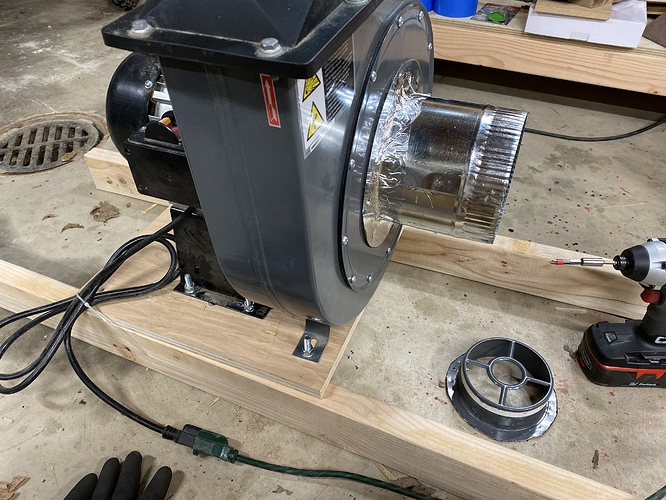
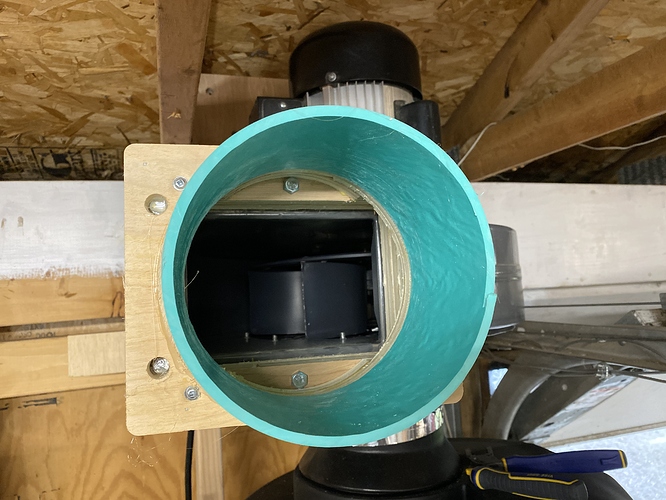
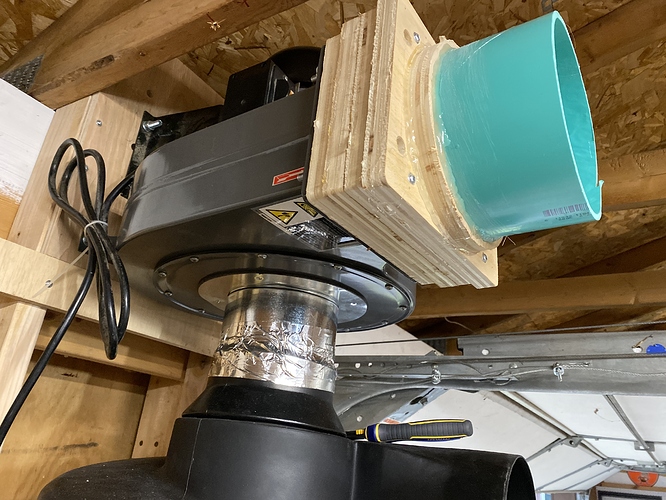

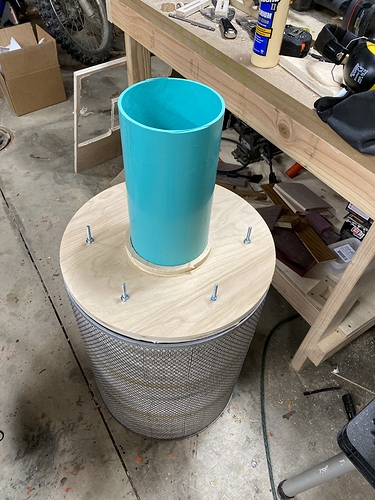
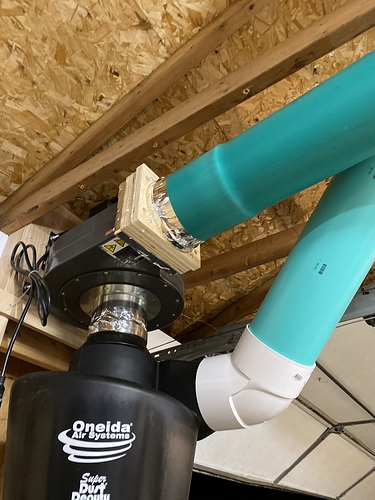

 ) , and hosed it down outside. Seemed ok… but next morning we found it burned out. Glad it was outside.
) , and hosed it down outside. Seemed ok… but next morning we found it burned out. Glad it was outside.